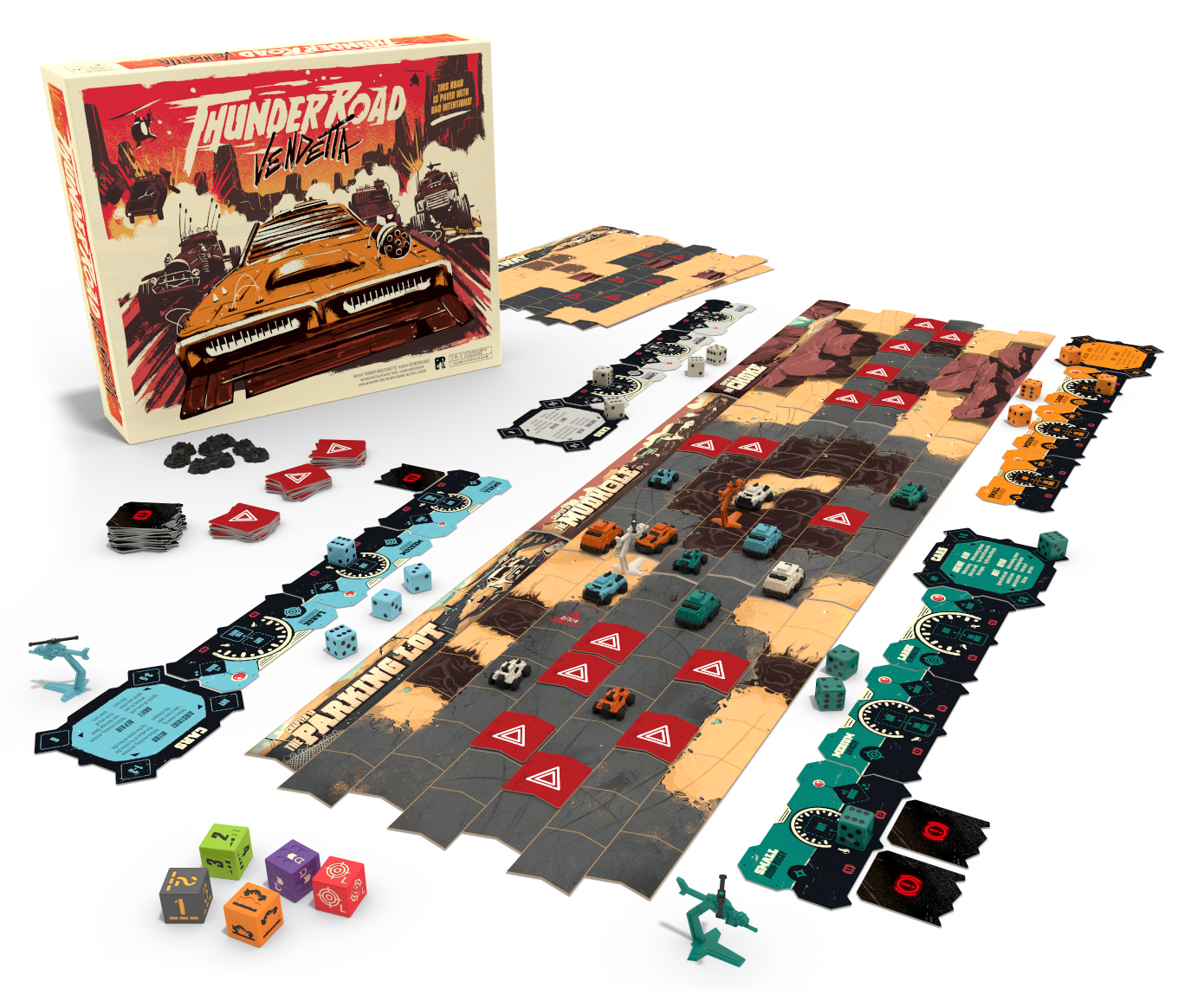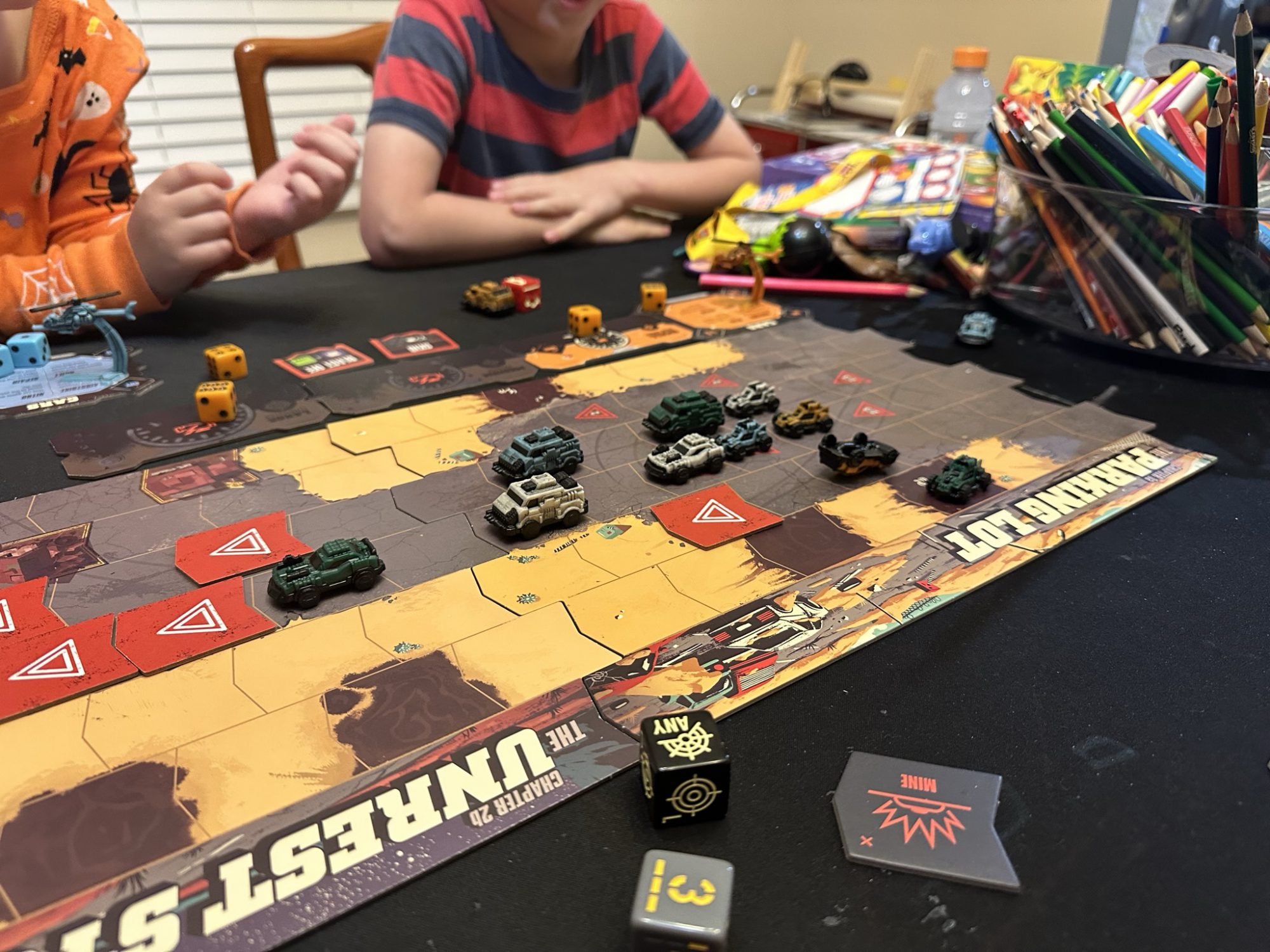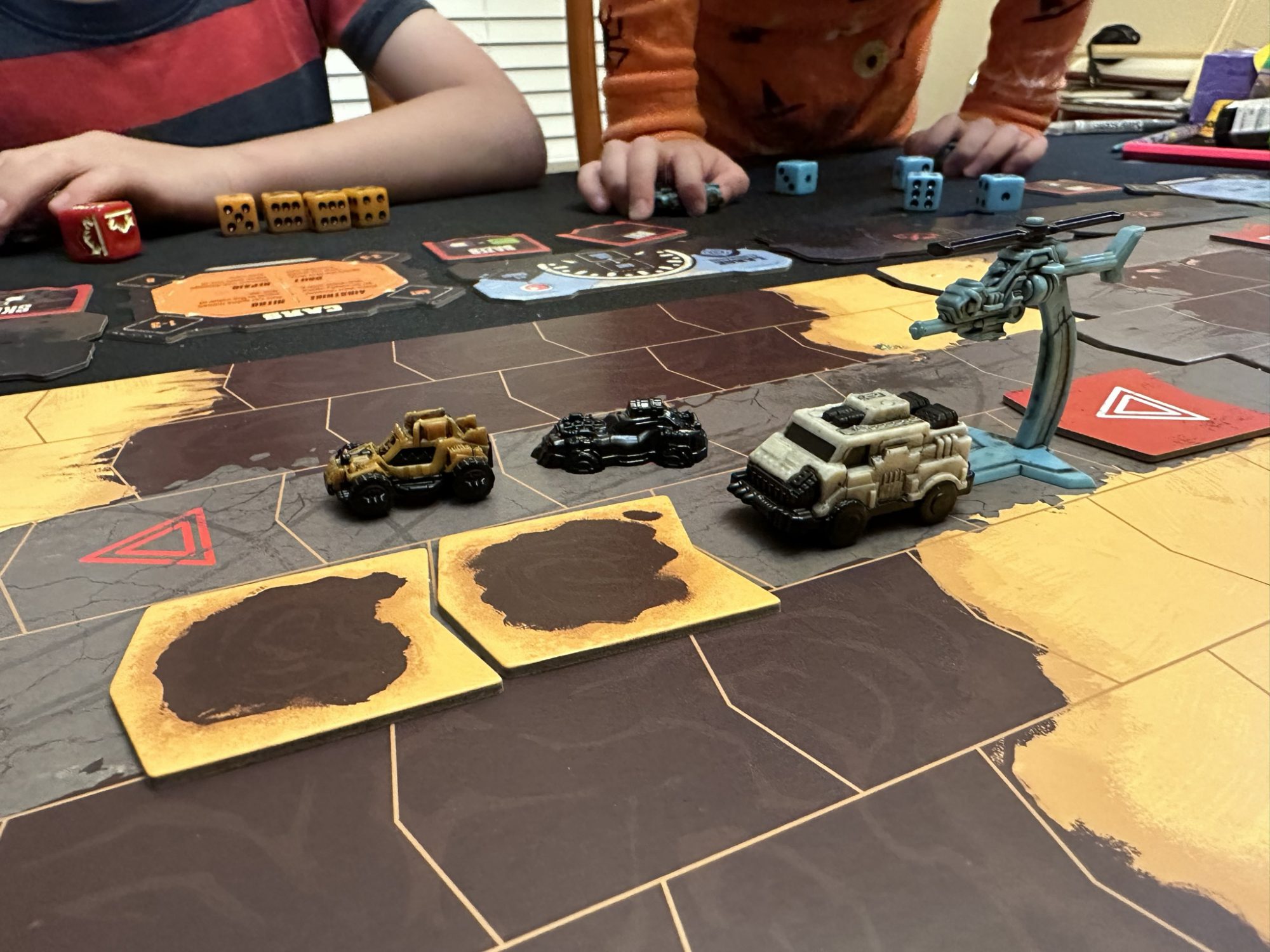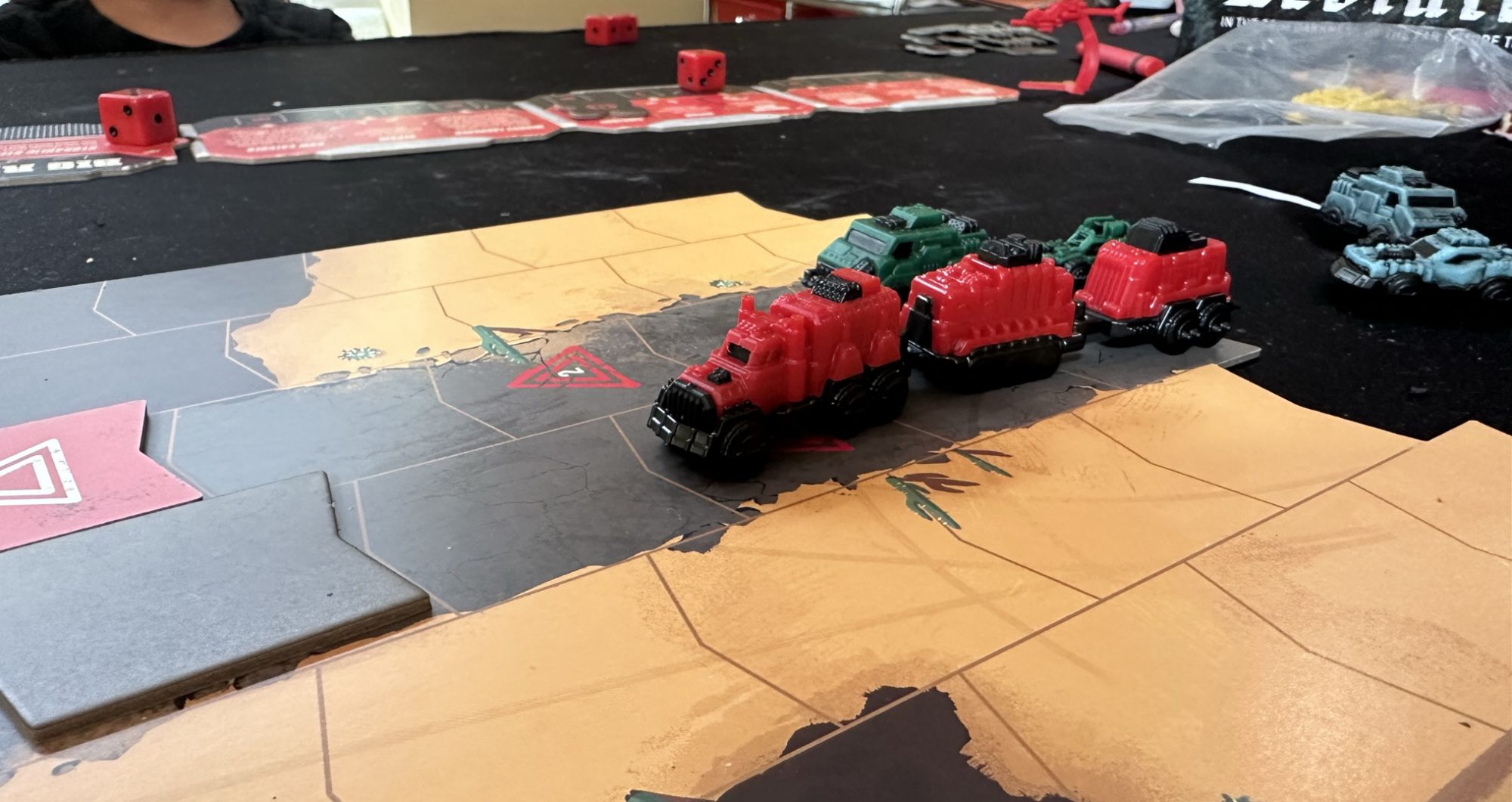It was not very long into my first play of Thunder Road: Vendetta before I started regretting my Kickstarter pledge. Like many of Restoration Games’ titles Thunder Road: Vendetta was launched via Kickstarter, and I rarely back games anymore. I made an exception; they’re on a fantastic streak of games hitting nearly every title out of the park. Unfortunately I backed this one at the basic level instead of the fully souped up Maximum Chrome edition, and deeply deeply regret not going all-in.

Every Restoration Games release is a modern update of an old out of print game, and Thunder Road: Vendetta is no exception. The original Thunder Road is an old Milton Bradley game where players drive a few plastic cars and a helicopter down a dusty road, trying to blow each other up Mad Max style. This new one doesn’t stray too far from the original formula. The board is a little longer, there are more abilities and expansions, but you’re still racing (technically) while trying to blow each other up.
While not ostensibly a kids game, my first play of Vendetta was with my boys aged 8 and 5. The core game loop is simple enough for the 5 year old to understand and execute, though you can imagine he leans a bit more into the carnage than the racing and is prone to drive his own car over hazards just to see what happens. He’s even won while doing that, much to my 8 year old’s chagrin.

Three large board tiles make up the road, each filled with various spaces and face down hazard tokens. At the beginning of the game all cars start off the board and you’ll go in turn spending dice to move along a road that quickly fills up with enemy car-batants and detritus, trying to speed your way to the other end of the board. Once someone makes it to the end, the entire playing field slides down and another tile is added to the front creating an eternal rolling road. Any cars on the last tile are permanently eliminated.
While the racing element is fine, the magic of Vendetta comes from the destruction. My “oh god I should have backed for everything” moment came pretty early, after deploying my first helicopter. Players have 4 powers and each round you can activate one of them if you have a die with the right number. Helicopters, which kick ass, can be placed in any empty space on the entire board and get to take an immediate free shot at a car in front of them. They then stay on the board until you next move them and any car that lands (or careens) into their space is destroyed instantly…and you can deploy them with any face of the die.

Any ”reasonable” game would have put this power behind a high roll, like a 5+ or a 6. Thunder Road: Vendetta is not interested in reason. It wants you shooting each other up, it wants you smashing into each other, causing chain reactions of more smashes that result in cars getting blown up or sent off the board. Thunder Road: Vendetta recognizes that blowing shit up is not just fun it is joyous and that when a game is joyous it doesn’t matter if you lose a “race”, if your cars are destroyed, or even if you’re completely eliminated from the game.
Yes, eliminated. Thunder Road: Vendetta features the third-rail of gaming: player elimination. If all 3 of your cars are simultaneously eliminated, you’re out. This triggers the end game: instead of continuing along your never-ending road of diesel and death, the finish line token is added to the end and the first remaining player to cross the finish line wins. This my friends, is brilliant.
The obvious effect here is that no one is eliminated for very long because the game comes to a swift end as soon as someone loses all their cars. What’s brilliant, however, is that by embracing player elimination Thunder Road: Vendetta does not have to shy away from that joy that comes from filling a turn with carnage. In fact, it can slam its foot right down and go all-gas-no-brakes on destruction. It’s repairing your car that requires a roll of 6. Helicopters are always an option, restraint is for losers.

To be clear, there is a lot that is out of your control in Vendetta. Dice are everywhere in this game. Not only do they determine your speed as you move along the track, they’re used for nearly everything else. When you smash into a car (yours or an opponent’s) dice will determine which car moves and where they move. Dice determine if you hit with a shot and when you are hit and then what that damage does to your car is also randomly determined by a tile.
I say that only because I’m gushing over a game I’m in love with and I want to set some clear expectations. There are certainly ways to play strategically but it’s really more about doing what you can to minimize risk than it is execute on a clear specific plan. There’s only so much you can do however. It’s not uncommon to see your car get smashed into, knocked to the side, knocked again to a different side, then knocked once more into a wall and eliminated thanks to a chain reaction of smashes and shrapnel when it isn’t even your turn.
That will turn off certain gamers but it sure as hell revs my engines. I played my first game of Brass: Birmingham recently, and liked it quite a bit more than I expected. It isn’t my normal cup of tea but the expanding network of canals and railways coupled with industry and carefully timed screwage was a lot of fun. It was fun…but it wasn’t joyous.
Lots and lots of games are fun, and if a game is fun there isn’t really more you can ask of it. Fun is enough, truly. Fun sparks joy and that’s why we play. But Thunder Road: Vendetta goes beyond fun. Thunder Road: Vendetta does not just spark joy, it detonates joy. It erupts joy. It slaps an exposed V12 engine to a mini-gun and launches joy through a maelstrom of fire and hot steel, ending in a dusty burnout and a 5 year old’s wide-eyed whisper of “Daddy this is the best game ever”.


